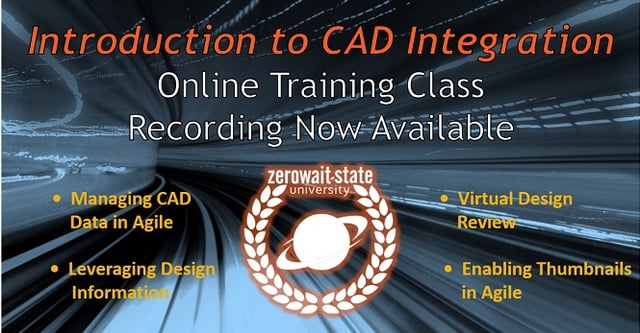My eight year old son was mesmerized by Rick Riordan's Percy Jackson & the Olympians: The Lightning Thief . In the book, the gods of the Greek and Roman Pantheon battle with their unique abilities, which results in epic conflict. Currently in the Product Lifecycle Management (PLM) space there seem to be two types of PLM solutions that vie for supremacy with their unique abilities. Several solutions including Windchill PDMLink from PTC and Teamcenter from UG/Siemens have their origins in computer aided design (CAD) and derive a lot of their structure directly from engineering data. Alternatively, products like Agile, Matrix Enovia, and Arena are driven by the bill of material and seem to be more focused on the manufacturing side of organizations. It presents an interesting dichotomy. All of these products fall under the same label and presumably address the same business challenges but do so in a significantly different way. Whether its lightning bolts or tridents, slaying inefficiencies in product development processes is no trivial feat. Potential customers need to fully understand the benefits and disadvantages each type of PLM presents so they can determine the best approach for their environment. This article will begin a series on exploring the capabilities of these applications in the context of engineering versus manufacturing. We will tap a number of content experts as we take a deeper dive into the core structures of the engineering- and manufacturing-based PLM solutions. This first article will lay the ground work and establish the context for the remaining articles in the series.
Actually, there are a lot of similarities in product development and Greek mythology. The mythical hydra has been used as an analogy frequently as you chop off one of its heads and two grow back, similar to solving one bottleneck or issue only to see additional problems created by the solution. I am sure we can all relate to poor Sisyphus who is doomed to forever push the boulder to the top of the hill only to have it roll back down to the bottom. It seems also that the conflicts between engineering and manufacturing are as ancient as the conflicts of the Greek Gods and maybe even older. I can imagine the frustration of the first caveman drawing his wheel and seeing the disparity in the finished product. Zero Wait-State works in these environments and has exposure to both types of PLM. Understandably, vendors for these products feel they are the superior solution in all cases regardless of the circumstances. However, we have identified that each approach has strengths and weaknesses that can be challenging for certain types of companies.
At first glance most PLM solutions seem remarkably similar. They all are based on a database (usually Oracle). They typically have a web based user interface with browser friendly conventions. They all have a pretty robust access control logic environment that allows for granular control of what information can be accessed by whom. Finally, some sort of rules based workflow engine is essential for any PLM. When companies evaluate PLM they compare these features and tend to settle on the one whose capabilities seem to best fit their needs. Some PLM solutions have more granular security. Some have a more robust workflow engine. Others have a more intuitive user interface. Sometimes, when the PLM vendors fail to differentiate themselves, the decision is driven by price. However, one area engineering-based PLM vendors tend to try to drive requirements is toward CAD data management. CAD data presents some unique challenges. It is typically hierarchical and requires APIs from the authoring tool to correctly map the relationships into the PLM. Some vendors don't expose these APIs, giving them an advantage in managing this information in their specific PLM solution. On the other side, manufacturing-based PLM solutions will emphasize the enterprise connectivity issues, integration into Customer Resource Management (CRM) and Enterprise Resource Management (ERP). They will imply that having all of these applications on a unified framework is advantageous, and sometimes it is. This is where the tradeoffs begin. Storing CAD data inside a PLM requires certain types of data models be in place and takes up a significant amount of bandwidth due to the size and complexity of these files. It also dictates that the interface be significantly more complex. On the other hand, not having this information vaulted in the PLM can create a disconnect between Engineering and Manufacturing, which is one of the main things you are trying to avoid when you adopt PLM. It comes down to speed versus power in some cases, and it really depends on the type of company you have and the challenges you are facing.
Each of the gods in the Greek pantheon had unique powers. Zeus had his thunderbolts and could blast his foes into oblivion, but sometimes he wasn't particularly precise in doling out his wrath. Hermes was the messenger of the gods; he had wings on his feet and could move about with unrivaled speed. Athena was the goddess of wisdom and knew all things and used this knowledge to her advantage. Each of these gods is similar to the various PLM solutions with their positive capabilities and the downside associated with these strengths. Power means complexity, ease of use means potential limits on capability, customizable means an implementation nightmare, etc. We will explore all of these functions and their upsides and downsides in great detail over the next few weeks. Stay tuned and as the Greeks say may the gods be with you.
[Edit: repost from 2010]



